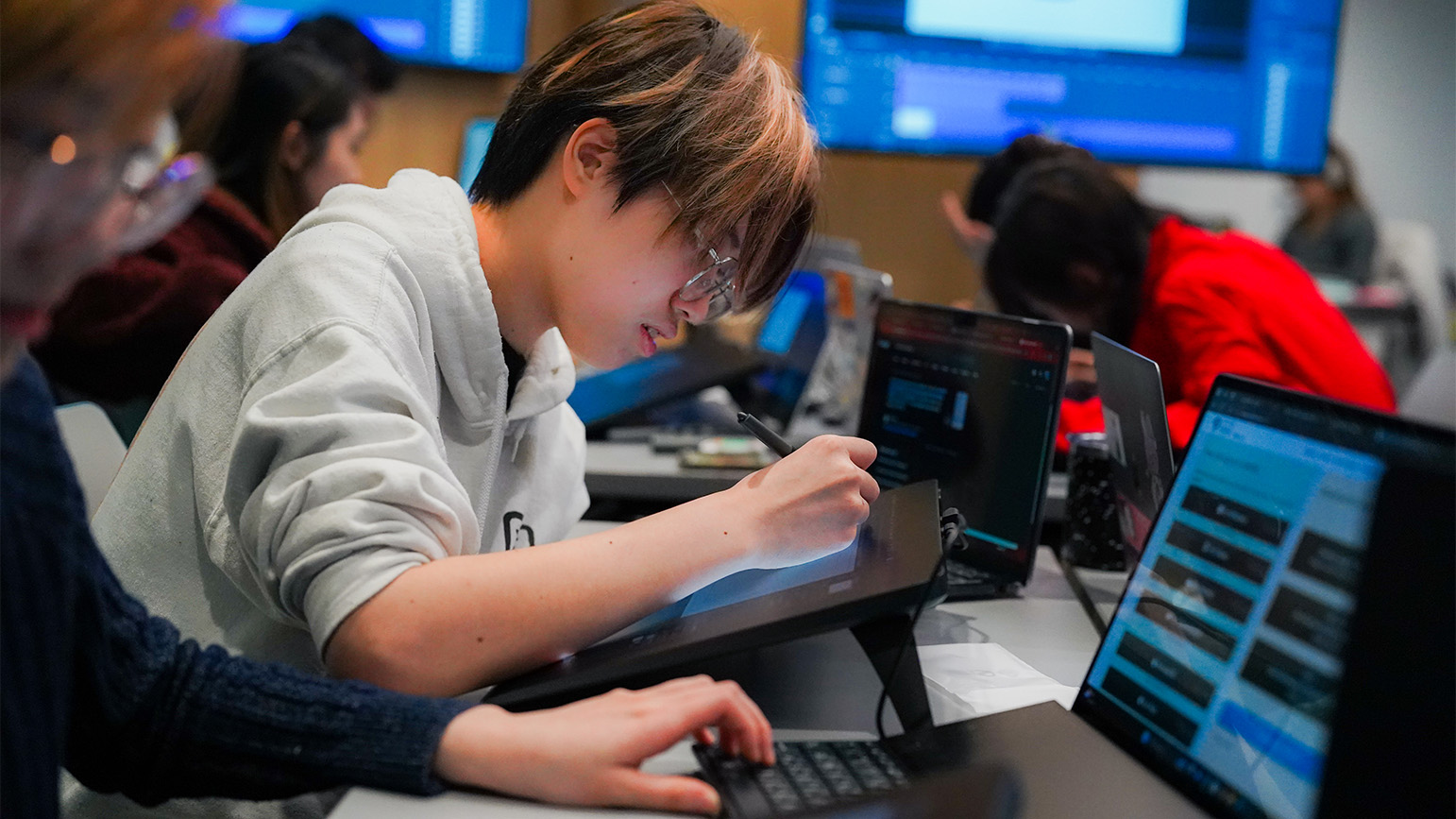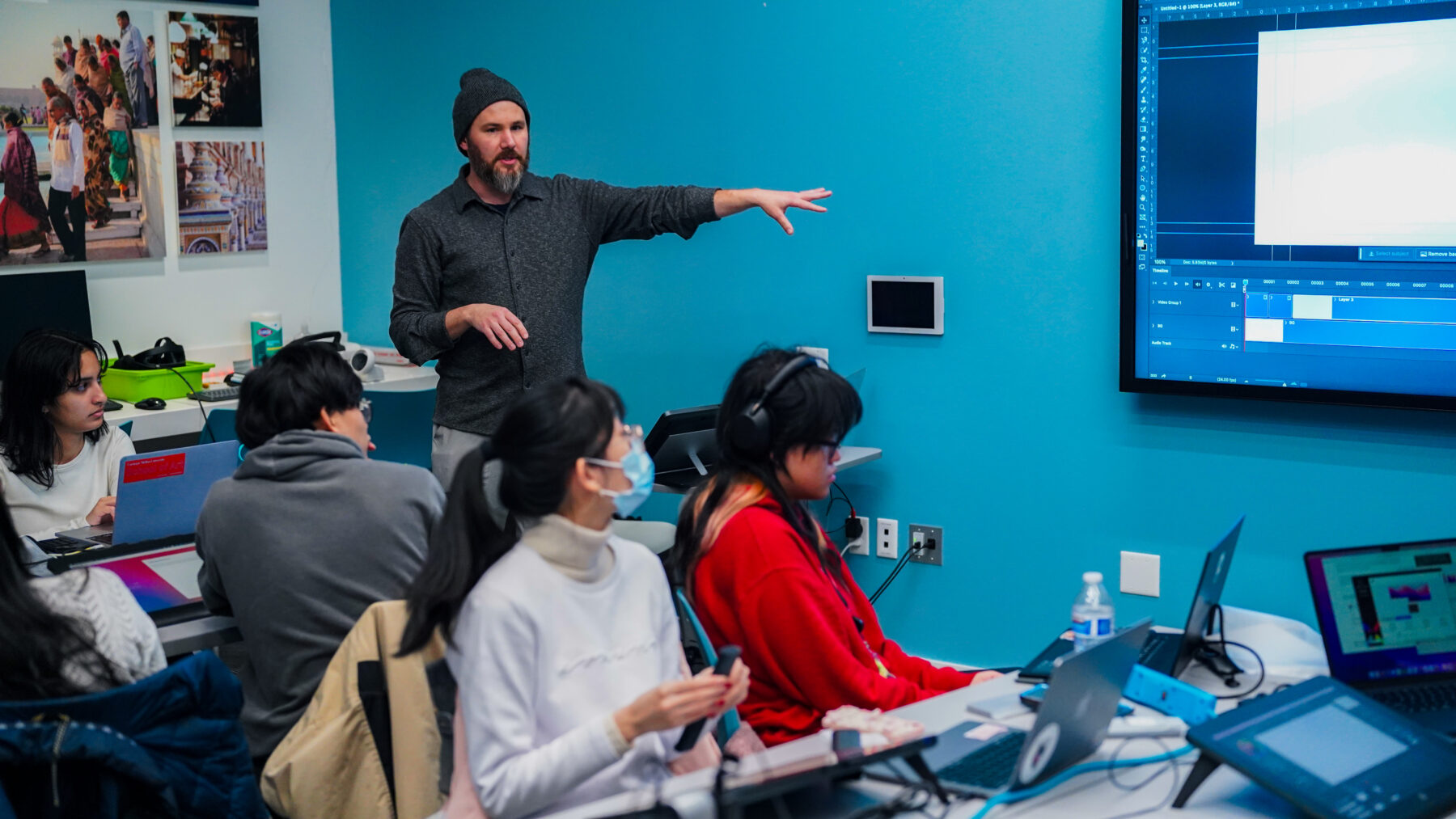
A new course this spring links together two unlikely topics: ancient storytelling and contemporary technology. The class, Chinese Mythology and Animation, is team-taught by School of Art professor Johannes DeYoung and Languages, Cultures and Applied Linguistics professor Gang Liu.
DeYoung and Liu first met one another through the Immersive Cultural Innovation Fund, which supports the development of courses that use new media technology to explore storytelling. The fund gives students opportunities to create technological work that explores language, culture, and identity. DeYoung and Liu first ran a pilot of the course during the summer term, and based on that success, decided to turn Chinese Mythology and Animation into a semester-long class.
Chinese Mythology and Animation combines humanities research, including reading academic texts about Chinese storytelling, with hands-on creative assignments. Working in small groups, students first write their own story and then base their animation on that story.
Both the story assignment and the final animation encourage students to go beyond a simple retelling of a myth. Instead, students are challenged to examine tropes, symbols, and other elements to gain a deeper understanding of the role of storytelling.
Stacey Cho, a senior in the School of Art, said she appreciated the discussion around the philosophical aspects of the stories, something she hadn’t previously considered in other coursework. Although she’s taken many animation courses, this class encouraged her to approach an animation project in a new way.
With a non-prescriptive approach to storytelling, students are free to explore various elements of the Chinese mythology traditions. Some stories, and the subsequent animations, are set in the real world, others in mythical spaces; some are set in ancient times whereas others take place in the modern world. Similarly, some stories are more abstract while others use more straightforward storytelling techniques.
Working in different mediums also gives students the opportunity to examine what’s gained or lost in translation, said DeYoung. “We’re thinking not just in terms of language, but how translating from the written word to a visual medium affects meaning.”

The interdisciplinary approach extends to the students taking the class. Rather than being housed in one major, this course enrolls students from across the university. “This semester, we have students in art, business, computer science, and humanities disciplines,” said Liu. “Each of them brings something different to the class. Without an interdisciplinary class like this, these students probably wouldn’t have the chance to collaborate and learn from each other.”
With a wide variety of backgrounds and skill sets, the animation projects in the class are taking many different forms, said DeYoung. One group is creating an illustration-based animation, another is working in the shadow play theater tradition, while yet another team is making a choose-your-own-adventure-type interactive game. Rather than prescribing a specific animation assignment, the course encourages students to combine their varied skill sets and interests to create something unique to their group.
To assist with their animations, students are using XPPEN digital drawing displays and accessories, generously donated by the company this spring.
Stacey Cho said her team decided to do an immersive projection that also incorporates physical objects based on the varied interests and backgrounds of her group members. “We have a drama major who works in stage lighting and production, I work in VR and AR mixed reality, another member works in 3D animation and coding, and yet another makes physical interactive work, so we wanted to combine all these skills together.”
The varied group backgrounds go beyond technical skills. Although their animation uses Chinese mythology as a starting point, the project also incorporates their own cultural backgrounds. “The project takes place in an ancient Chinese village, but it also incorporates several Easter eggs alluding to our own cultures.”
DeYoung and Liu are continuing their collaboration and are planning their next team-taught course for the fall: Chinese Ghost Stories and Shadow Play.




